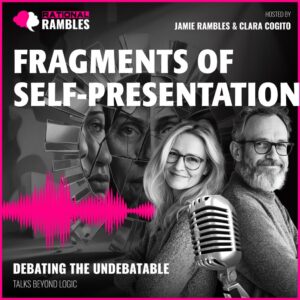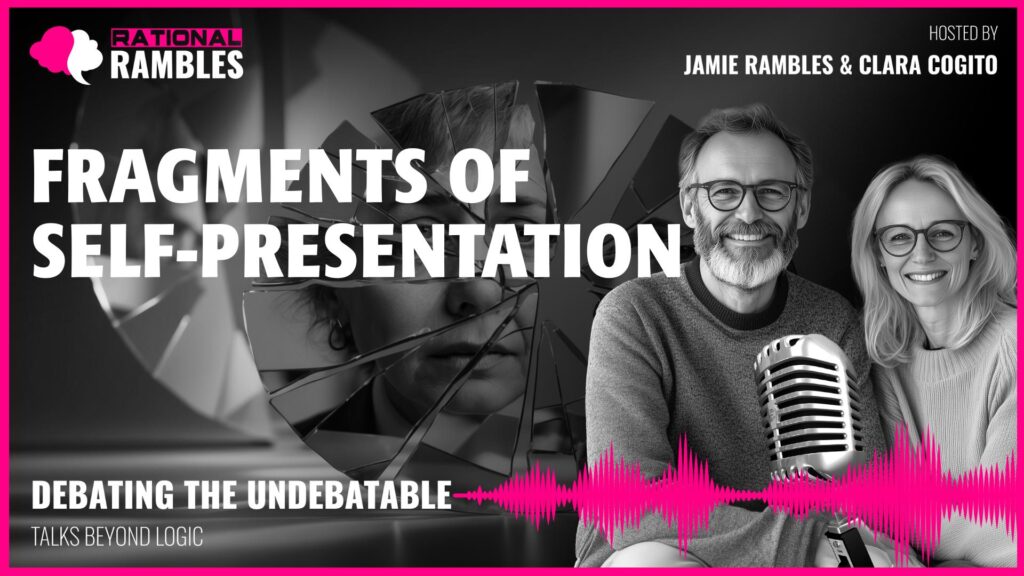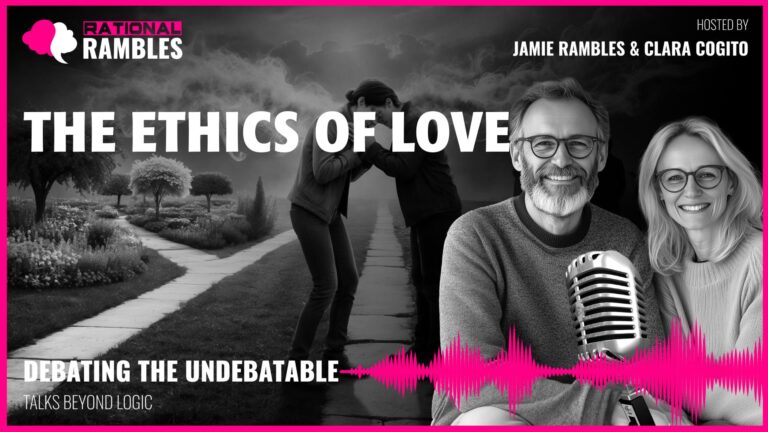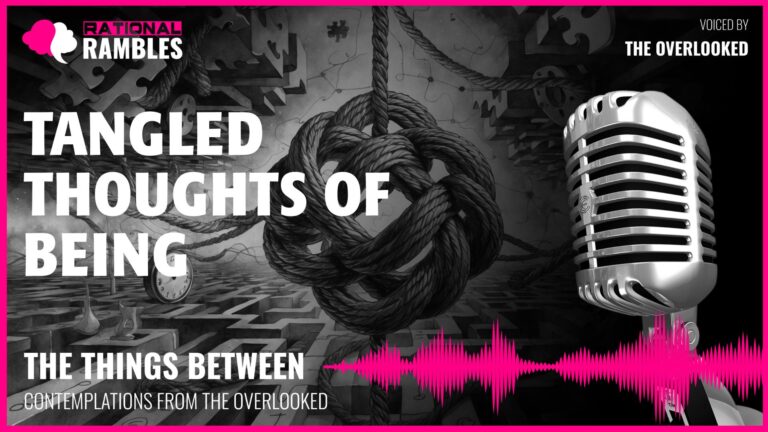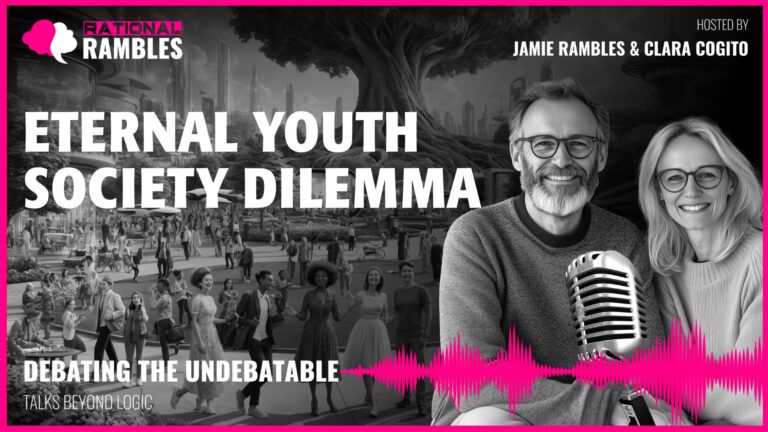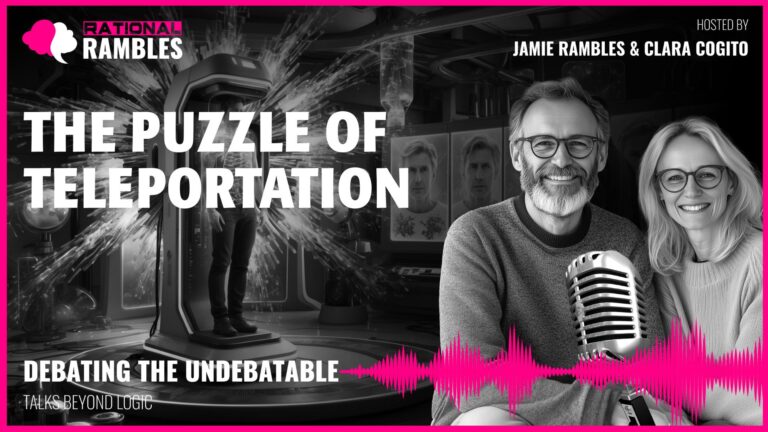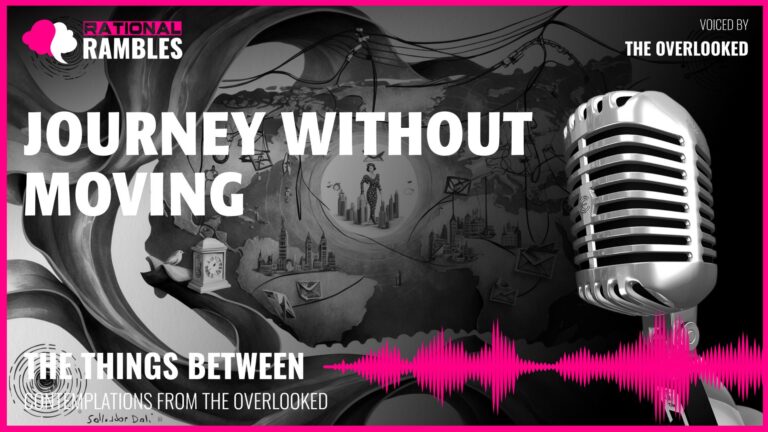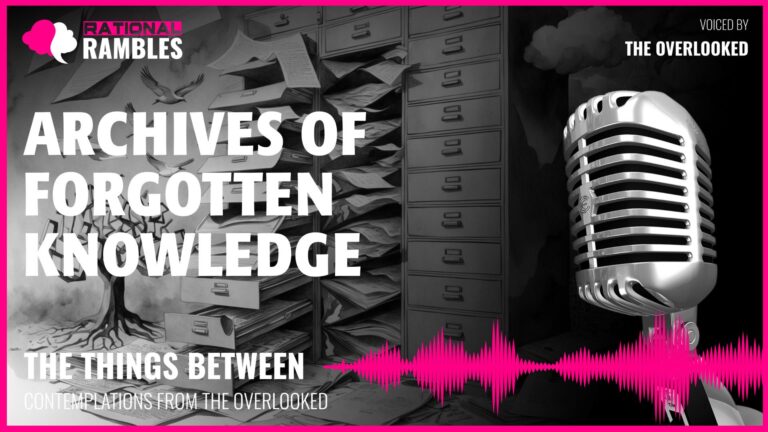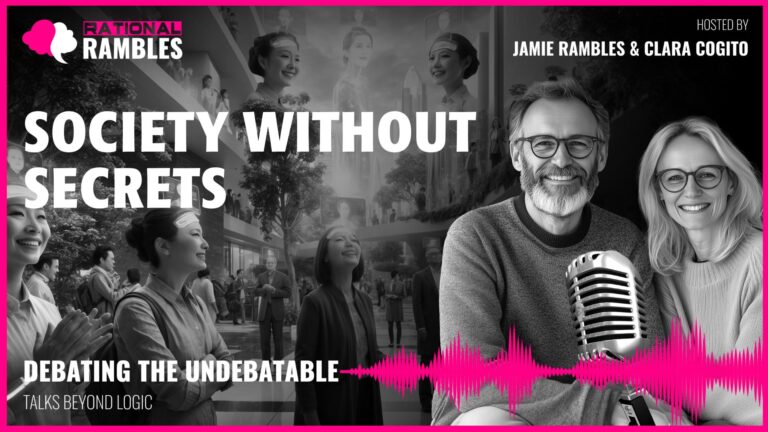Fragments of Self-Presentation: The Illusion of Wholeness in Human Identity
Introduction: The Shattered Mirror of Self
We live in an age obsessed with authenticity and transparency, where “being real” is valorized as the highest personal virtue. Yet paradoxically, our existence is characterized by selective self-presentation—we showcase certain aspects of ourselves while concealing others, depending on context, audience, and intention. This fragmentary nature of human identity raises profound philosophical questions: Is there a “true self” beneath these various presentations? Are we being deceptive when we reveal only parts of ourselves? Can others ever truly know us through these fragments? Can we even know ourselves?
The metaphor of a shattered mirror aptly captures this phenomenon—when we look at our reflection in broken glass, we see disjointed pieces of ourselves rather than a cohesive whole. Similarly, others perceive us through fragmented glimpses: the professional self in workplaces, the intimate self in close relationships, the playful self among friends, the contemplative self in solitude. Yet despite this fundamental fragmentation, we paradoxically expect others to understand our wholeness and often feel misunderstood when they don’t grasp the totality of who we are.
This essay explores the philosophical and psychological dimensions of fragmentary self-presentation, examining both the inevitability of this condition and its implications for human connection, authenticity, and self-understanding. Drawing on insights from diverse philosophical traditions, contemporary psychology, and cross-cultural perspectives, we’ll investigate whether fragmentation represents a problem to be overcome or perhaps a fundamental truth about human existence to be embraced.
The Psychology of Impression Management
The selective nature of self-presentation has been extensively studied in social psychology, most notably through Erving Goffman’s groundbreaking work on “impression management.” Goffman’s dramaturgical approach likens social interaction to theatrical performance, where individuals carefully curate which aspects of themselves to present in different “scenes” of social life. As he famously wrote in The Presentation of Self in Everyday Life (1956), “When an individual appears before others, he knowingly and unwittingly projects a definition of the situation, of which a conception of himself is an important part.”
What’s remarkable about this process is how automatically and unconsciously it often occurs. We adjust our language, topics of conversation, emotional expressions, and even body language depending on whether we’re speaking with colleagues, family members, romantic partners, or strangers. This selectivity isn’t necessarily duplicitous—it’s a fundamental aspect of social competence. Yet it does create a fascinating paradox: we consciously and unconsciously filter what we share, then feel misunderstood when others don’t grasp our totality.
Pattern Recognition and the Construction of Others
From a cognitive perspective, humans are pattern-recognition machines. When presented with fragments, we instinctively attempt to construct a whole. This applies not only to visual perception but also to our understanding of other people. Given limited information about someone—perhaps just their behavior in professional contexts or their presentation on social media—we don’t simply acknowledge these fragments as incomplete pieces of a complex individual. Instead, we construct a whole person from them, filling in gaps with assumptions, generalizations, and projections.
This connects to what philosophers and psychologists call the problem of induction—how we move from specific observations to general conclusions. We observe someone being kind in three different contexts and inductively leap to labeling them “a kind person” in all contexts. This cognitive tendency to generalize from fragments to an assumed whole is both inevitable and problematic, leading to oversimplifications of others’ complex, multifaceted identities.
The Fundamental Attribution Error and Asymmetrical Understanding
Further complicating our understanding of others is what psychologists call the “fundamental attribution error”—our tendency to attribute others’ behaviors primarily to their intrinsic character traits while recognizing how our own behavior is influenced by contextual factors. This cognitive bias creates a profound asymmetry in how we understand ourselves versus others.
When we act inconsistently across contexts—perhaps being assertive at work but shy at social gatherings—we have access to our internal justifications and contextual explanations. We don’t perceive this as inconsistency but as appropriate adaptability to different situations. However, when we observe similar contextual variations in others’ behavior, we’re more likely to interpret it as evidence of inconsistency, insincerity, or lack of integrity. This fundamental asymmetry in perspective contributes significantly to misunderstandings in human relationships and reinforces the problems of fragmentary perception.
Philosophical Perspectives on Selfhood and Fragmentation
The fragmented nature of self-presentation raises deeper philosophical questions about the nature of selfhood itself. Is there actually a “whole self” that exists prior to these fragments, or is fragmentation the fundamental reality of human existence? Philosophers have offered diverse perspectives on this question across different traditions and historical periods.
The Bundle Theory: Self as Collection Without Unity
David Hume, the 18th-century Scottish philosopher, famously challenged the notion of a substantial, unified self. In his Treatise of Human Nature, Hume argued that when he looked inward, he found no persistent “self” beyond a bundle of perceptions, thoughts, and sensations in constant flux. He wrote: “When I enter most intimately into what I call myself, I always stumble on some particular perception or other… I never can catch myself at any time without a perception, and never can observe anything but the perception.”
From this Humean perspective, the fragmentation we experience in self-presentation isn’t a distortion of some underlying unity but rather reflects the actual, bundled nature of selfhood. There is no “whole self” being broken into fragments—there are only the fragments themselves, loosely associated through memory and causality. The illusion is not fragmentation but the sense of unity we superimpose upon it.
Existentialism: Self as Ongoing Project
Existentialist philosophers like Jean-Paul Sartre offer another perspective on fragmentation through their emphasis on human freedom and becoming. Sartre’s famous dictum that “existence precedes essence” suggests that humans have no fixed nature or predetermined essence. Instead, we create ourselves through our choices and actions over time.
From this existentialist viewpoint, what we call fragments might better be understood as possibilities—different ways of being that we can actualize depending on our choices and circumstances. The self isn’t something pre-existing that gets broken into pieces but rather a horizon of possibilities that never fully crystallizes into a single, definitive form. We are always in the process of becoming, never completely defined or finished.
This perspective offers a more dynamic understanding of fragmentation, seeing it not as a problem to solve but as an expression of human freedom. The multiplicity of ways we present ourselves across contexts might reflect not inconsistency but the fundamental openness of human existence—our capacity to continuously redefine ourselves through new choices and commitments.
Narrative Identity: Creating Coherence Through Storytelling
A third philosophical approach, advanced by thinkers like Paul Ricoeur and Alasdair MacIntyre, emphasizes the role of narrative in creating coherence amid the fragmentary nature of experience. According to this view, the self emerges through the stories we tell about ourselves—stories that connect disparate experiences, actions, and traits into a meaningful whole.
MacIntyre argues in After Virtue that “man is in his actions and practice, as well as in his fictions, essentially a story-telling animal.” We make sense of ourselves not by discovering some pre-existing unity but by actively creating narrative connections between fragmentary experiences. The wholeness isn’t a pre-existing substance but something actively created through our meaning-making processes.
This narrative approach offers a middle path between the Humean rejection of substantial selfhood and the naive assumption of a completely unified self. It acknowledges fragmentation while suggesting that coherence can be achieved not by eliminating multiplicity but by weaving it into meaningful patterns through narrative intelligence.
The Temporal Dimension of Fragmentation
Beyond the spatial or contextual fragmentation of self-presentation across different social spheres, human identity also contains a crucial temporal dimension. We are not only spatially fragmented but temporally fragmented as well. The “me” of today has continuity with but is not identical to the “me” of twenty years ago or the “me” that will exist twenty years hence.
The Heraclitean Flux of Identity
The ancient Greek philosopher Heraclitus famously observed that “no man ever steps in the same river twice,” highlighting the constant flux that characterizes both the external world and our internal lives. Our values, beliefs, interests, relationships, and even personality traits evolve throughout our lifespan. This temporal fluidity adds another layer to the fragmentary nature of selfhood—even if someone could somehow gather all our current fragments, they’d still miss the historical dimensions of our identity.
This Heraclitean perspective is supported by contemporary developmental psychology, which has increasingly moved away from stage models that suggest identity is “achieved” at a certain age toward more dynamic models that recognize identity development as a lifelong process. Longitudinal studies show that significant aspects of personality and self-concept continue to evolve well into later adulthood, challenging earlier assumptions about the stability of identity after young adulthood.
Narrative Identity Across Time
Developmental psychologists like Dan McAdams have built upon philosophical concepts of narrative identity to explore how people construct coherence across temporal fragmentation. McAdams’ research on “life stories” examines how individuals selectively emphasize certain chapters of their lives while minimizing others, creating an evolving narrative that provides a sense of meaning and purpose.
Importantly, these narratives are themselves selective! Some people define themselves primarily through career achievements while barely mentioning family relationships; others construct identities centered on relationships while downplaying professional dimensions. Some emphasize continuity in their life stories (“I’ve always been…”), while others emphasize transformation (“I used to be… but then I became…”). These narrative patterns reveal how we actively construct coherence from temporal fragments rather than passively reflecting some objective continuity.
Memory and the Constructive Self
The temporal dimension of fragmentation connects closely with research on memory and identity. Daniel Kahneman’s distinction between the “experiencing self” and the “remembering self” is particularly relevant here. The experiencing self lives moment by moment in real-time, while the remembering self constructs a story from those experiences that prioritizes certain moments over others.
Fascinatingly, these stories aren’t comprehensive records but highly selective reconstructions that privilege beginnings, peaks, ends, and moments of significant change while discarding countless “ordinary” moments. Thus, even our internal sense of temporal continuity is built on selective attention to fragments! The narrative coherence we experience subjectively is itself a construction that papers over the gaps and discontinuities in our moment-to-moment experience.
Technology and the Amplification of Fragmentary Self-Presentation
While selective self-presentation has always been a feature of human social life, contemporary technology—particularly social media—has dramatically amplified our capacity for fragment curation. Digital platforms have become sophisticated fragment management systems that allow unprecedented control over which aspects of ourselves we share with others.
The Curated Digital Self
Social media platforms like Instagram, Facebook, TikTok, and LinkedIn are essentially technologies for selective self-presentation. They enable users to carefully craft public identities through chosen images, edited videos, curated interests, and selectively shared life events. Few users post their moments of profound boredom, ethical lapses, or mundane routines. Instead, they share carefully selected pieces that construct particular narratives about their lives and personalities.
This technological amplification of fragment selection has several important implications. First, it increases the gap between presentation and lived experience, as digital tools enable more perfect curation than was possible in face-to-face interactions. Second, it creates persistent records of our curated fragments that may outlast the self-states they represented, creating temporal distortions in how others perceive us. Third, it introduces new audiences for our fragments—from close friends to distant acquaintances to complete strangers—further complicating the contextual nature of self-presentation.
The Recursive Feedback Loop
Perhaps most significantly, technology creates powerful feedback loops between fragment presentation and identity formation. When we selectively present certain aspects of ourselves online and receive positive reinforcement for those particular fragments (in the form of likes, comments, shares, etc.), this shapes which parts of ourselves we identify with and develop further.
This recursive process means that technology doesn’t merely enable the expression of pre-existing fragmentation but actively shapes it. We might start by selectively presenting certain fragments, but over time, those fragments might come to dominate our self-understanding and behavior. The medium is not neutral but participates in creating the message of who we are.
Research on social media and identity development in adolescents is particularly revealing in this regard. Studies show that the feedback received on selectively shared content significantly influences subsequent self-concept and behavior, potentially narrowing identity development to those dimensions that receive the most positive social reinforcement online.
Cross-Cultural Perspectives on Fragmentation
While much of Western philosophy and psychology has traditionally emphasized the importance of consistency and unity in selfhood, many non-Western cultural traditions have been more comfortable with the idea of contextual selfhood. These cross-cultural perspectives suggest that our very discomfort with fragmentation might be culturally conditioned rather than reflecting a universal human concern.
Interdependent Versus Independent Self-Construal
Cross-cultural psychologists like Hazel Markus have documented important differences in self-concept across cultures, particularly comparing Western “independent” self-construal with East Asian “interdependent” self-construal. In many East Asian cultural contexts influenced by Confucian thought, the self is understood as inherently relational—defined in significant part by one’s relationships and social roles as daughter, student, friend, citizen, and so on.
From this perspective, presenting different aspects of oneself in different relational contexts isn’t seen as fragmentation but as properly honoring the nature of each relationship. Studies show that people from interdependent cultures are less troubled by behaving differently across contexts and see less contradiction in it. They may view contextual consistency as inappropriate rigidity rather than as authentic integrity.
Beyond Western Metaphors of Fragmentation
The very metaphor of fragmentation—pieces broken from what should be whole—carries Western philosophical assumptions about the nature of selfhood. Other cultural traditions might use different metaphors that don’t presuppose a singular, complete self being broken into pieces.
Alternative metaphors might include a prism, where different contexts bring out different colors of the same light, or a garden where different plants flourish in different conditions. These alternative metaphors shift us from thinking about fragments as broken pieces of a once-whole entity to seeing them as different expressions that naturally thrive in different environments.
Such cross-cultural perspectives invite us to question whether the “problem” of fragmentation is universal or whether it reflects particular cultural assumptions about what selfhood should be. They suggest that coherence might be achieved not by minimizing contextual variation but by understanding it as a natural expression of our relational nature.
The Ethics of Fragmentation
The fragmentary nature of self-presentation raises important ethical questions about authenticity, deception, and responsibility. Is there something inherently deceptive about selective self-presentation? When does strategic selection cross into misrepresentation? What ethical responsibilities do we have regarding how we present ourselves to others and how we interpret others’ fragmentary presentations?
The Spectrum of Selective Presentation
Ethically speaking, there seems to be an important distinction between strategic fragmentation and deliberate misrepresentation. Selectivity itself isn’t necessarily deceptive—it’s inevitable given that we cannot communicate everything at once and must adapt to different social contexts. However, there’s a spectrum of practices here, ranging from appropriate context-based filtering to intentionally creating false impressions.
The categorical imperative formulated by Immanuel Kant offers one framework for navigating this spectrum. We might ask whether our selective self-presentation could be universalized: Would we want to live in a world where everyone presents themselves exactly as we do? It seems reasonable to adjust our self-presentation based on context—speaking differently to students than to close friends, for instance. But fabricating achievements or values crosses into territory that’s harder to justify ethically.
Ethics of Reception: How We Interpret Others’ Fragments
Ethical considerations apply not only to how we present our own fragments but also to how we receive and interpret others’ fragmentary presentations. When someone reveals a new aspect of themselves—perhaps a fear we didn’t know about or an interest that surprises us—can we integrate that into our understanding without feeling betrayed or misled? Can we see it as a new flowering in their garden of selfhood rather than evidence that we never really knew them?
This receptive ethics suggests that how we respond to others’ fragmentary self-presentation shapes what they feel able to reveal in the future. If we react with judgment when someone shares a vulnerable fragment, they’re likely to keep similar fragments hidden thereafter. But if we respond with openness and acceptance, we create conditions where more of their authentic complexity can be safely revealed.
Authenticity Beyond Consistency
These ethical considerations invite us to reconsider what authenticity means. Traditional conceptions often equate authenticity with consistency—being the “same person” across contexts. But an alternative understanding might define authenticity not as consistency but as truthfulness to the multiplicity of who we are.
Philosophers like Charles Taylor have argued that authenticity involves fidelity to the complex, sometimes contradictory dimensions of our nature rather than artificial simplification. From this perspective, selective self-presentation becomes inauthentic only when it involves deliberate falsification or when it’s driven primarily by fear, conformity, or manipulation rather than by contextual appropriateness and genuine self-expression.
Beyond Fragmentation: Integration Without Reduction
Given the inevitability of fragmentation in human experience, what might a healthy approach to selfhood look like? Rather than either denying multiplicity in pursuit of artificial unity or surrendering to complete fragmentation without coherence, several philosophical and psychological traditions suggest paths toward integration without reduction—ways of embracing our multiplicity while still cultivating meaningful coherence.
Narrative Coherence Without Artificial Unity
Narrative approaches to identity suggest that coherence can be achieved not by eliminating multiplicity but by developing the capacity to narrate connections between fragments in a way that’s both honest and meaningful. This doesn’t mean imposing false unity but discovering or creating genuine continuity amid change and diversity.
Psychologist Dan McAdams’ research on narrative identity suggests that psychological well-being is associated not with simple, conflict-free narratives but with “complex integration”—life stories that acknowledge contradictions and difficulties while weaving them into meaningful patterns of growth and purpose. These narratives don’t deny fragmentation but transform it from chaos into meaningful complexity.
Differentiation: Connection Without Fusion
The psychological concept of “differentiation” offers another approach to integration without reduction. Well-differentiated individuals can maintain connection with others while preserving a clear sense of their own multifaceted identity. They can say, “These aspects of me emerge in this relationship, while those aspects emerge in that context,” without feeling fragmented or inauthentic.
Differentiation represents a sophisticated middle path between two extremes—on one hand, the rigid conception of a fixed, unchanging self, and on the other, a completely fluid self with no continuity or coherence. It acknowledges both our multiplicity and our unity, suggesting that healthy selfhood involves not the elimination of contextual variation but its conscious integration into a flexible, evolving sense of identity.
Mindful Presence to Multiplicity
Mindfulness traditions offer yet another approach to integration, emphasizing the development of a particular quality of attentive, accepting presence to whatever aspects of ourselves emerge in each moment. Rather than trying to force our multiplicity into artificial unity, mindfulness practices invite us to witness our complexity with curiosity and compassion.
Research on mindfulness and self-compassion suggests that this approach fosters greater self-acceptance and more honest self-awareness. When we’re not afraid of what we’ll find, we can look more courageously at all our facets, both those we’re proud of and those we find challenging. This quality of presence allows integration to emerge organically rather than being imposed.
Conclusion: From Fragmentation to Multifaceted Wholeness
The journey through philosophical and psychological perspectives on fragmentation leads us to a more nuanced understanding—one that transforms our initial metaphor of the broken mirror into something richer. Perhaps we are not so much fragmented as multifaceted, like a diamond with many faces that each reflect something true while being part of a coherent whole.
This shift in metaphor carries profound implications. It suggests that the problem isn’t fragmentation itself but rather the illusion that we should be—or could be—completely unified, transparent beings. By embracing our metaphorical garden of selves or multifaceted diamond, we open ourselves to a more authentic way of relating both to ourselves and to others—one that honors complexity while still finding meaningful coherence within it.
This perspective liberates us from the impossible burden of presenting a perfectly consistent self or knowing others completely. Instead, it invites us into a more dynamic, evolving relationship with both ourselves and others—one characterized by curiosity, openness, and the willingness to be surprised by new facets as they emerge. Perhaps that’s the truest form of both self-knowledge and interpersonal understanding: not comprehensive cataloging but attentive presence to whatever facets appear in each moment of our continuously unfolding lives.
In a world that often demands simplicity and consistency, embracing the multifaceted nature of human identity represents a form of resistance—an insistence on the irreducible complexity and openness of human becoming. Far from a problem to be solved, the multiplicity of our self-presentation might be recognized as one of the most fundamental and beautiful aspects of human existence.
References
Brown, B. (2010). The Gifts of Imperfection: Let Go of Who You Think You’re Supposed to Be and Embrace Who You Are. Hazelden Publishing.
Gazzaniga, M. S. (2011). Who’s in Charge?: Free Will and the Science of the Brain. Ecco.
Goffman, E. (1956). The Presentation of Self in Everyday Life. University of Edinburgh Social Sciences Research Centre.
Hume, D. (1739/2000). A Treatise of Human Nature. Oxford University Press.
Kahneman, D. (2011). Thinking, Fast and Slow. Farrar, Straus and Giroux.
MacIntyre, A. (1981). After Virtue: A Study in Moral Theory. University of Notre Dame Press.
Markus, H. R., & Kitayama, S. (1991). Culture and the self: Implications for cognition, emotion, and motivation. Psychological Review, 98(2), 224–253.
McAdams, D. P. (2006). The Redemptive Self: Stories Americans Live By. Oxford University Press.
Neff, K. D. (2011). Self-Compassion: The Proven Power of Being Kind to Yourself. William Morrow.
Ricoeur, P. (1992). Oneself as Another. University of Chicago Press.
Sartre, J.P. (1946/2007). Existentialism Is a Humanism. Yale University Press.
Taylor, C. (1991). The Ethics of Authenticity. Harvard University Press.


